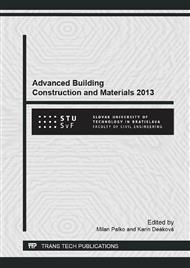p.35
p.39
p.43
p.47
p.52
p.57
p.62
p.67
p.71
The Impact of the Dynamic Facade Elements on the Energy Balance of the Reference Building in Winter
Abstract:
Buildings have a significant impact on a long-term energy consumption, therefore it is necessary to focus our effort towards the improvement of energy efficiency of buildings. Alternative solutions that can significantly reduce the amount of energy needed to operate buildings are being sought. In this paper we want to highlight the potential of the building envelope which can dynamically change the properties of structure openings based on the type of the building operation and change of climatic conditions. It is important that modern facades are perceived not only in terms of architecture but also in terms of functionality. We focused on the comparison of the impact of dynamic facades on reducing heat loss through the structure openings on the reference building. We assigned the facade features that improve thermal insulation properties of opening structures. We assessed the impact of dynamic facades on specific heat consumption needed for heating. It has been shown that dynamic facade elements are useful not only in terms of sun protection but also have an impact on the reduction of specific heat consumption. The right design of operation of a dynamic facade with proper thermal insulation elements can provide a quality indoor environment where thermal stability is ensured in winter as in summer.
Info:
Periodical:
Pages:
52-56
Citation:
Online since:
December 2013
Authors:
Price:
Сopyright:
© 2014 Trans Tech Publications Ltd. All Rights Reserved
Share:
Citation:


